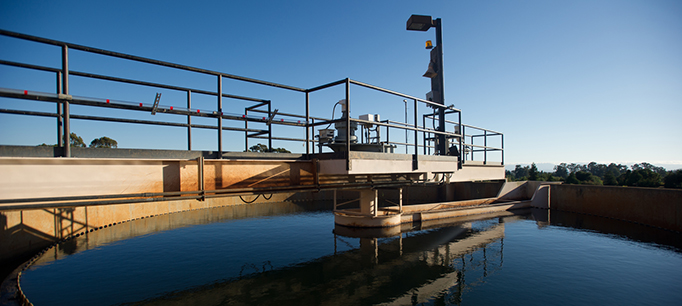California’s water management systems face a list of daunting challenges, from the current drought to water pollutants to aging infrastructure. Newsha Ajami is at the cutting edge of encouraging high-tech advances to improve how cities manage water, both in her role as director of urban water policy at Stanford Woods Institute for the Environment and as a member of a new project called ReNUWIt. We asked her about some of the advances she’s seeing around the state, and what a “next-gen water system” might look like.
 PPIC: How is technology changing how we manage water?
PPIC: How is technology changing how we manage water?
Newsha Ajami: Technological advances are playing a significant role in many aspects of water management—from how individuals use water (for example, water-efficient appliances), to how we collect data and measure our water supply (such as smart meters). Some of these technological advancements have been directly impacting customer behavior. For example, software like WaterSmart allows customers to better understand their water use habits and potentially revise them. In the past 30 years, water use per capita has been dropping steadily, in part due to tech advances like more efficient toilets, washing machines, dishwashers, shower heads, and the like.
Also, various water purification technologies have enhanced our local and regional water supplies through treatment and reuse of wastewater for different purposes. For example, the West Basin Water District has been purifying some of the wastewater from the Los Angeles area and supplying it to various industrial and commercial customers.
In the near future, technologies that allow us to capture and reuse stormwater, rainwater, and graywater could play a significant role in enhancing regional water supplies and enhance our water supply portfolio.
PPIC: What are some of the more interesting projects that ReNUWit is focusing on to improve urban water management?
NA: There are so many interesting engineering and management projects within the ReNUWIt program. ReNUWIt researchers have developed an innovative wastewater treatment technology that allows us to treat wastewater and generate energy from captured methane, simultaneously. The energy is used to power the water reclamation process, making it a net zero-energy wastewater treatment system.
We’re also working on a smart water-trading platform, which is a tool to enable virtual trading in regions with shared water. The way it would work is that when users can make do with less of the high-quality water in their shared system—perhaps by building a water recycling plant for use by the industrial sector—their saved water is made available for other users in the system. It’s sort of an Airbnb for water. The system can provide a platform for water suppliers to share in a more flexible and transparent way.
Also, in partnership with the Oro Loma Sanitary District and various industries and NGOs, ReNUWit is designing a “constructed wetlands” at the Oro Loma wastewater treatment plant on San Francisco Bay. This is a multipurpose project to remove nitrogen, provide habitat, and buffer the treatment plant from the effect of sea level rise. We are also testing to see if such wetlands could potentially remove contaminants such as pharmaceuticals, fire retardants, pesticides, and chemicals from home cleaning products. This approach offers a creative way to meet environmental concerns related to wastewater treatment without the need to replace the entire treatment plant.
PPIC: You’re also on the Bay Area Regional Water Quality board. What kinds of improvements are you seeing in this area?
NA: The San Francisco Bay Regional Water Quality Control Board has been undertaking multiple initiatives to further protect our water bodies from pollution. For example, in our efforts to better manage and clean up various pollutants that show up in urban runoff, the updated Municipal Regional Stormwater Permits would require municipalities to develop a plan to implement green infrastructure throughout their jurisdictions. We are also actively working with our permittees on reducing trash, which often finds its way into our waterways. And we are streamlining permitting of recycled water projects, especially those that aim to provide recycled water for residential landscape irrigation use.
PPIC: What good things are coming out of the drought?
NA: California has taken many steps to address water reliability in the past few years, partly due to the severe drought we have been facing—from big-ticket items like our new groundwater law and the $7.5 billion water bond, to smaller fixes like streamlining permitting of recycled water projects. The drought has also raised public awareness regarding water scarcity, which plays a vital role in changing consumer behavior in both the short and long term. It’s led to renewed statewide discussion on how we value our water resources, and how we allocate it among competing demands. I really hope some of these discussions turn into action and change the way we manage and govern this precious resource.


